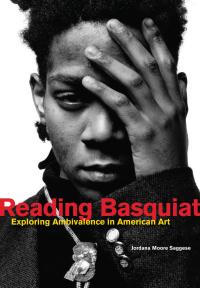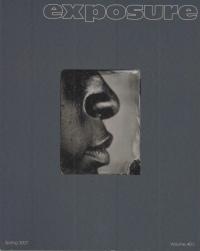Jordana Moore Saggese

Professor, Modern and Contemporary American Art, Art History and Archaeology
Director, David C. Driskell Center for the Visual Arts and Culture of African Americans and the African Diaspora
saggese@umd.edu
1214 Cole Student Activities Building
Get Directions
Education
Ph.D., , University of Illinois at Urbana-Champaign
Research Expertise
African American/African Diaspora
Critical Theory
Modern and Contemporary
Photography
Race/Ethnicity
The Americas
Visual Culture
Dr. Jordana Moore Saggese is Professor of American Art and the former Editor-in-Chief for the College Art Association's Art Journal. Her research focuses on modern and contemporary American art, with an emphasis on expressions of Blackness. Across Dr. Saggese's research projects there is an investment in the line between popular culture and critical culture. This investment manifests in the subjects and methodologies of her research, which draw equally from visual culture studies and the traditional history of art, as well as in the dissemination of findings across both academic and general audiences. Dr. Saggese's art history capitalizes on the cultural appeal of the popular in order to speak back to the exclusionary tactics of cultural institutions, while also making connections between pop culture and the reality of life in the United States.
Professor Saggese's first two books have centered on the work of the contemporary American artist Jean-Michel Basquiat (1960-88) - one of the most popular yet critically overlooked artists of the twentieth century. Reading Basquiat: Exploring Ambivalence in American Art (University of California Press, 2014), the first (and still only) monographic study of Basquiat to be published by an academic press, reconsiders the artist's place in the history of modern American art. This research also expands the parameters of aesthetic discourse to consider the impact of Basquiat's musical and literary interests on his working protocols as a painter. More than a monographic study, Reading Basquiat uses the work of one artist as a means to engage larger issues concerning the reception of Black artists, as well as debates over key artistic practices of the late twentieth century, including appropriation and expressive painting. This book was recognized as an Exceptional First Book by the PEN Center USA in 2015, and will be reissued in paperback in April 2021.
Professor Saggese's second book The Jean-Michel Basquiat Reader: Writings, Interviews and Critical Responses was published by the University of California Press as part of the award-winning ""Documents of Contemporary Art"" series, edited by Jack Flam, in March 2021. Until now, the sustained study of this artist has been inhibited by the lack of a dedicated archive, as well as access to specific works. The majority of extant scholarship exists in the form of exhibition catalogues with limited circulation, while what remains of the artist's personal records and papers is divided between private collections and the artist's estate. Through a combination of interviews with the artist, hard-to-find articles, and previously unpublished research conducted during the course of Professor Saggese's dissertation and first book, The Jean-Michel Basquiat Reader provides a full picture of the artist's views on art and culture, his working process, as well as the critical significance of his work both then and now.
In addition to these two books, Professor Saggese has continued to publish on Basquiat in both academic outlets as well as in catalogues for exhibitions in New York, London, Germany, Montreal, and Paris. She has lectured recently on this research at both Columbia and Princeton Universities, given interviews for public radio in the U.S. and the UK, and currently serves as a consulting advisor for a forthcoming exhibition at the Montreal Museum of Fine Arts. You can see a Ted-Ed video on Basquiat (with a script by Dr. Saggese) here.
Saggese's current book project Heavyweight: Black Boxers and the Power of Representation is forthcoming from Duke University Press. Heavyweight maps the visual terrain of racial ideology in the United States, paying particular attention to the intersecting discourses of blackness, masculinity, and sport in the late nineteenth century. This new research has been supported by an Alisa Mellon Bruce Senior Visiting Fellowship at Center for Advanced Study in the Visual Arts (CASVA), National Gallery of Art, Washington, D.C. and by the University of Maryland's Independent Scholarship, Research, and Creativity Awards (ISRCA). Professor Saggese has also published additional essays and reviews in Art Journal, The International Review of African-American Art, Nka: The Journal of Contemporary Art, exposure, and Artforum.
Professor Saggese's teaching is informed by her interests in the history of photography, print culture, abstraction, conceptual art, performance art, post-colonial theory, and disability studies. Most classes rely on the rich resources of the DC Metro area - particularly galleries and museums - to bring the history of art into real time and space for students. For undergraduate students Professor Saggese offers courses in American art (from the colonial period to the present), African American art, and critical race art history. At the graduate level she currently teaches the required methods seminar for the department as well as special topics seminars in American Art (e.g., The Athletic Turn: Sports in American Art in Fall 2019 and Blackness in Relief in Fall 2022).
Graduate Supervision
Professor Saggese is interested in supervising graduate research on gender, race, sexuality or class in American art or visual culture from the late nineteenth century to the present, as well as projects on Modern or Contemporary American art or visual culture more broadly. She welcome inquiries from prospective students for PhD study.
Awards & Grants
Independent Scholarly Research and Creativity Award
An award from the University Provost and the Vice President for Research to support my third book project "Game On: Boxing, Race, and Masculinity"
Author/Lead: Jordana Moore …Read More about Independent Scholarly Research and Creativity Award
Alisa Mellon Bruce Senior Fellow, Center for Advanced Study in the Visual Arts
The Paul Mellon and Ailsa Mellon Bruce Senior Fellowships are intended to support research in the history, theory, and criticism of the visual arts of any geographical area and of any period.
Author/Lead: Jordana Moore …Digital
"The Chaotic Brilliance of the Artist Jean-Michel Basquiat"
Learn about the life of American artist Jean-Michel Basquiat, from his start as part of graffiti duo SAMO to his rise as an internationally renowned painter.
Author/Lead: Jordana Moore …Read More about "The Chaotic Brilliance of the Artist Jean-Michel Basquiat"
Publications
The Jean-Michel Basquiat Reader: Writings, Interviews, and Critical Responses
The first comprehensive collection of the words and works of a movement-defining artist.
Author/Lead: Jordana Moore …
Read More about The Jean-Michel Basquiat Reader: Writings, Interviews, and Critical Responses
"Writing Black Archives: African-American Art History in Real Time"
Session at the CAA Annual Conference (online) co-organized with Sarah Elizabeth Lewis, Harvard University, and moderated by Nicole Fleetwood.
Author/Lead: Jordana Moore …Non-ARHU Contributor(s): Sarah Elizabeth Lewis
"Diversity and Difference"
An edited collection of essays concerning issues of diversity in higher education published in Art Journal.
Author/Lead: Jordana Moore …Jean-Michel Basquiat's "Horn Players" (1983)
A short essay on the work of Jean-Michel Basuiat for the new collection of AP Art History Resources on Khan Academy.
Author/Lead: Jordana Moore …Read More about Jean-Michel Basquiat's "Horn Players" (1983)
Reading Basquiat: Exploring Ambivalence in American Art
The first monographic study of one of the post popular artists of the late twentieth century.
Author/Lead: Jordana Moore …
Read More about Reading Basquiat: Exploring Ambivalence in American Art
"The Pictures Generation"
A short essay for the online education platform Khan Academy on the group of artists known as "The Pictures Generation."
Author/Lead: Jordana Moore …"Cut and Mix": Jean-Michel Basquiat in Retrospect"
A review of the 2010 Basquiat retrospective at the Fondation Beyeler.
Author/Lead: Jordana Moore …
In 1992, during the first retrospective of Basquiat's work, Richard Marshall lamented: "Jean-Michel Basquiat first became famous for his art, then he became famous for being famous, then he became famous for being infamous—a succession of reputations that often overshadowed the seriousness and significance of the art he produced." The artist's place is even now much more secure in pop culture than in academe, so the Basquiat retrospective that opened at the Fondation Beyeler in 2010 and subsequently traveled to the Musée d'Art Moderne de la Ville de Paris was not just a museum show to celebrate the artist's fiftieth birthday but also an argument for Basquiat's place in art history. Following precedent, this latest exhibition focused on the artist's larger, midcareer canvases, but this essay reads several of Basquiat's small-scale, early works as marked by often-overlooked inquiries into modernism, epistemology, and the potential of appropriation.
Read More about "Cut and Mix": Jean-Michel Basquiat in Retrospect"
"The Myth of Neutrality"
This essay reconsiders the visual rhetoric of documentary strategies in conceptual art photgoraphy.
Author/Lead: Jordana Moore …
Talk
"A Conversation with Peter Williams"
Artists' Legacy Foundation presents a conversation between 2020 Artist Award recipient Peter Williams and Dr. Jordana Moore Saggese, associate professor of American art at the University of Maryland.
Author/Lead: Jordana Moore …"Basquiat’s Currency: Art, Blackness, and the Market"
Invited paper for the conference “Political Values, Market Values, Art Values: The Ethics of American Art in the 1980s."
Author/Lead: Jordana Moore …Read More about "Basquiat’s Currency: Art, Blackness, and the Market"

